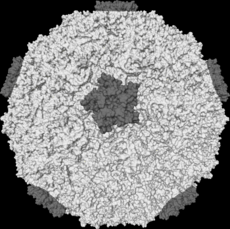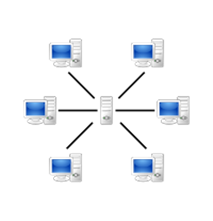In the previous posts (/pmr/2011/11/25/textmining-nactem-and-elsevier-team-up-i-am-worried/ and /pmr/2011/11/27/textmining-my-years-negotiating-with-elsevier/ ) I highlight concerns (not just mine) about the publicly announced collaboration between NaCTeM (The National Centre for Textmining at the University of Manchester) and Elsevier (henceforth N+E). I am now going to find out precisely the details of this collaboration and, when I have the answers, will be in a position to answer the following questions:
- What is NaCTeM’s mission for the nation? (NaCTeM formally has a responsibility to the Nation)
- What public finance has NaCTeM had and what is planned in the future?
- What public money has gone into the N+E?
- What are the planned the benefits to Elsevier?
- What are the planned benefits of N+E to NaCTeM?
- Are there plans to pass any of these benefits to the wider national community
In particular my concerns are:
- Will the benefits of this work be available only through Elsevier’s Sciverse platform?
- Are we getting value for money?
It may seem strange – and potentially confrontational – to use FOI to get this information rather than simply asking the University or NaCTeM. But the power of FOI is that the University has specialist staff to give clear unemotional answers. And in particular it will highlight precisely whether there are hidden confidential aspects. If so it will be especially important to assess whether this is in the Nation’s interest. And, with the possibility that this will reveal material that is useful to the Hargreaves process and UK government (through my MP) it is important that my facts are correct.
For those who aren’t familiar with the FOI process each public institution has a nominated office/r who must, within 20 working days, give answers to all questions (or show why s/he should not). I shall use http://whatdotheyknow.com – a superb site set up for this purpose which means that everyone can follow the process and read the answers. FOI officers are required to respond promptly, and I hope that Manchester will do so – and be quicker than Oxbridge who ritually take 19.8 days to respond. Note that I am not expected to give my motivation. I shall request the information in existing documents or known facts – this is not a place for future hypotheticals or good intentions.
Dear FOI University of Manchester,
I am requesting information under FOI about the National Centre for Text Mining (NaCTeM) and the University’s recently announced collaboration of NaCTeM with Elsevier (http://www.manchester.ac.uk/aboutus/news/display/?id=7627 ). The information should be supported by existing documents (minutes, policy statements, etc.). I shall be concerned about the availability of resource material to the UK in general (i.e. beyond papers and articles). I use the word “Open” (capitalised) to mean information or services which are available for free use, re-use and redistribution without further permission (see http:// http://opendefinition.org/ ). In general this means OSI-compliant Open Source for code and CC-BY or CC0 for content (CC-NC and “for academics only” are not Open).
General
- What is the current mission statement of NaCTeM?
- Does NaCTeM have governing or advisory bodies or processes? If so please list membership, dates of previous meetings and provide minutes and support papers.
- List the current public funding (amounts and funders) for NaCTeM over the last three years and the expected public funding in the foreseeable future.
- What current products, content and services are provided to the UK community (academic and non-academic) other than to NaCTeM?
- What proportion of papers published by NaCTeM are fully Open?
- What proportion and amount of software, content (such as corpora) and services provided by NaCTeM is fully Open?
Elsevier collaboration
- Has the contract with Elsevier been formally discussed with (a) funders (b) bodies of the University of Manchester (e.g. senates, councils)? Please provide documentation.
- Is there an advisory board for the collaboration?
- Has third party outside NaCTeM formally discussed the advantages and disadvantages of the Elsevier collaboration.
- Please provide a copy of the contract between the University and Elsevier. Please also include relevant planning documents, MoIs, etc.
- Please highlight the duration, the financial resource provided by (a) the University (b) Elsevier. Please indicate what percentage of Full Economic Costs (FEC) will be be recovered from Elsevier. (I shall assume that a figure of less that 100% indicates that the University is “subsidising Elsevier” and one greater than 100% means the University gains.
- Please indicate what contributions in kind (software, content, services, etc.) are made by either party and what they are valued at.
- Please outline the expected deliverables. Please indicate whether any of the deliverables are made exclusively available to either or both parties and over what planned timescale.
- Are any of the deliverables Open?
- What is the IP for the deliverables in the collaboration?
- Are any of the deliverables planned to be resold as software, services or content beyond the parties?
- Has NaCTeM or the University or any involved third party raised the concern that contributing to Sciverse may be detrimental to the UK community?
- Please indicate clearly what the planned benefit of the collaboration is to the UK.
I shall post this tomorrow so please comment now if you wish to.




 tweets
tweets
 influential tweets
influential tweets shares
shares

 bookmarks
bookmarks likes
likes

 tweets
tweets
 influential tweets
influential tweets
 tweets
tweets
 bookmarks
bookmarks
 blogs
blogs
 mentions
mentions
 bookmarks
bookmarks
 bookmarks
bookmarks
 bookmarks
bookmarks
 bookmarks
bookmarks
